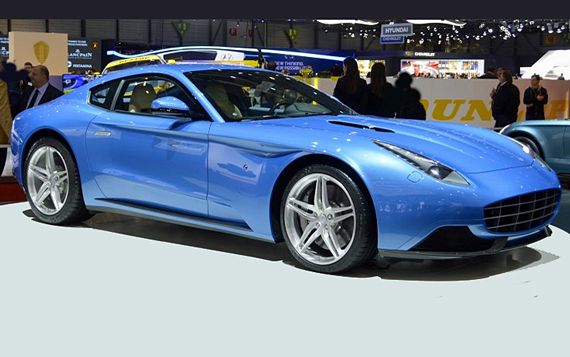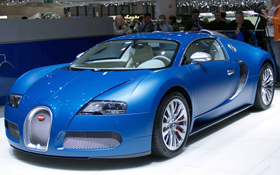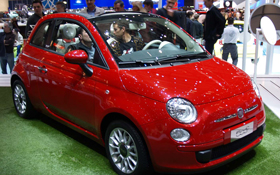
From 2015: The Ferrari Touring Superleggera Berlinetta Lusso combines beautiful proportions and timeless classic lines with state-of-the-art mechanical technology from the Ferrari F12. Scroll down to see cars from 2009 to the present from the Geneva Auto Show. Photo credit Gijsbert-Paul Berk
Photos and captions by Alessandro Gerelli unless otherwise noted
Commentary by Gijsbert-Paul Berk
We thought it might be fun to look at the reports from the Geneva show since 2009; what has changed in the past seven years? (In fact, VeloceToday can go back to 2004, but that is beating a dead horse; see a report from the 2004 Geneva show). Why do things appear the same? Are Italian designer in stasis, or are we just seeing the end of design cycles (such as the Bugatti Veyron)?
Armed with photos from photographer Alessandro Gerelli, we asked Gijsbert-Paul Berk his opinion; after all, he has been attending European Motor shows since the early 1950s, so has literally seen it all. He winds up with some interesting comments on what he considers the star of this year’s show.
The Economy
I believe that part of the answer to why designs seem unchanging is that from 2008 onward the economy of the western world has been in a pretty bad shape. That means that the market for extravagant fast cars has declined, and this of course has its effect, not only on the specialist coachbuilders, but on the entire auto industry. It is sad to see how many once famous names have disappeared.
Overdesign
I am also convinced that people are fed up with designers who have lost contact with reality and forget that cars, even sports cars, are made to transport people in safety and comfort. Of course aerodynamic laws have to be respected and in some cases spoilers are necessary. Personally I also detest ‘overdesign’ and in this respect like to quote the French pilot and writer Saint Exupéry: “Perfection has been achieved not when there is nothing left to add, but when there is nothing left to take away”. I realize that he meant this for writing books but in my mind it is also true in the applied arts, such as architecture and body design.
A new era is ahead
Are we at the end of a design era? To quote Winston Churchill: “This is not the end. It is not even the beginning of the end. But it is, perhaps, the end of the beginning.” The auto industry (that now has a history of nearly 120 years) is by nature and necessity rather conservative, because there is a lot of money invested in their existing factories and revolutionary changes in product lines are costly. But there is change on the horizon.
During the last decades computer and biosciences have evolved at a much faster rate than the technical innovation of our automobiles. I am convinced that in the coming years many new technologies will be incorporated in our cars to make them more ecological friendly, easier to use and improve traffic safety. In a few decades we will certainly have electric cars charged by induction panels in the roads while one is driving. They will also be equipped with autonomous driving controls that make it possible to use you smartphone or tablet and work when going somewhere. I have only one wish: that these vehicles will not all have a similar shape, and look alike, such as our fridges do today.
And your opinion: here’s a look at the Italians at Geneva from 2009 to 2015.
2009
A Bugatti Veyron Bleu Centenaire, one of the most expensive cars in the exhibition. The Fiat 500C (Cabriolet) has been one of the most interesting stars in the whole exhibition.

